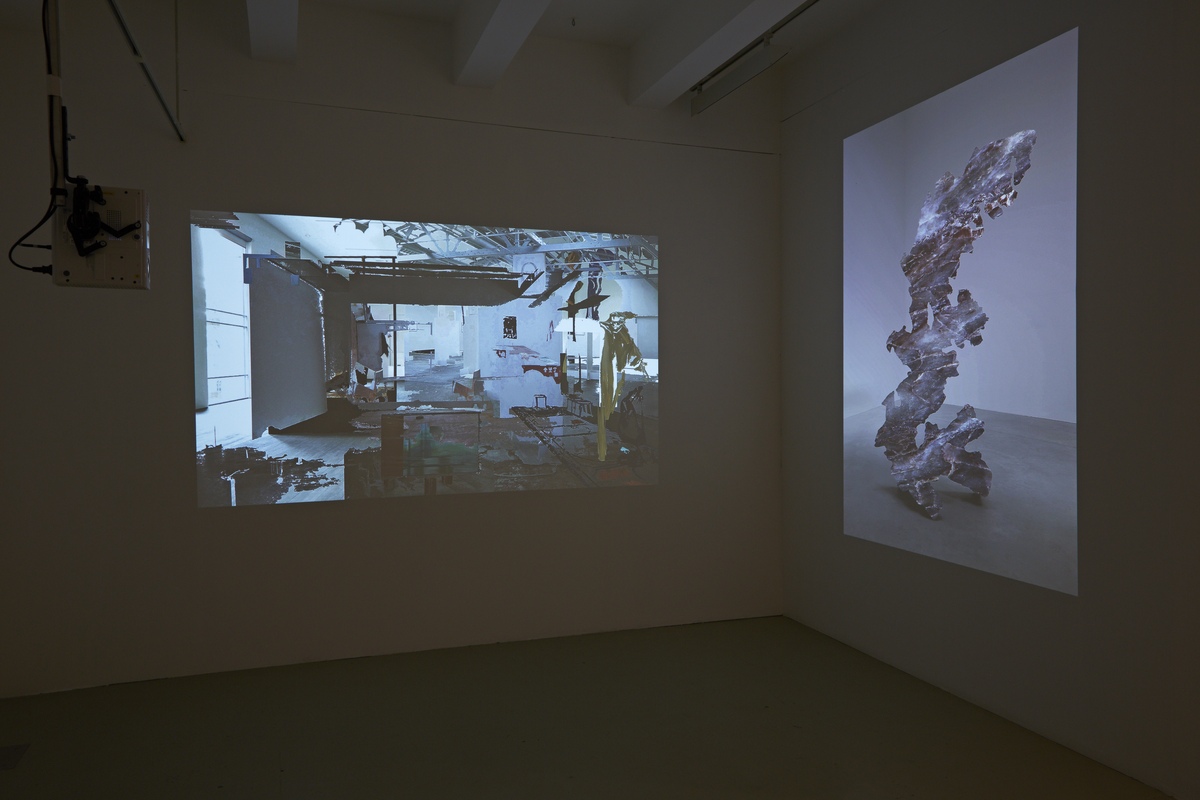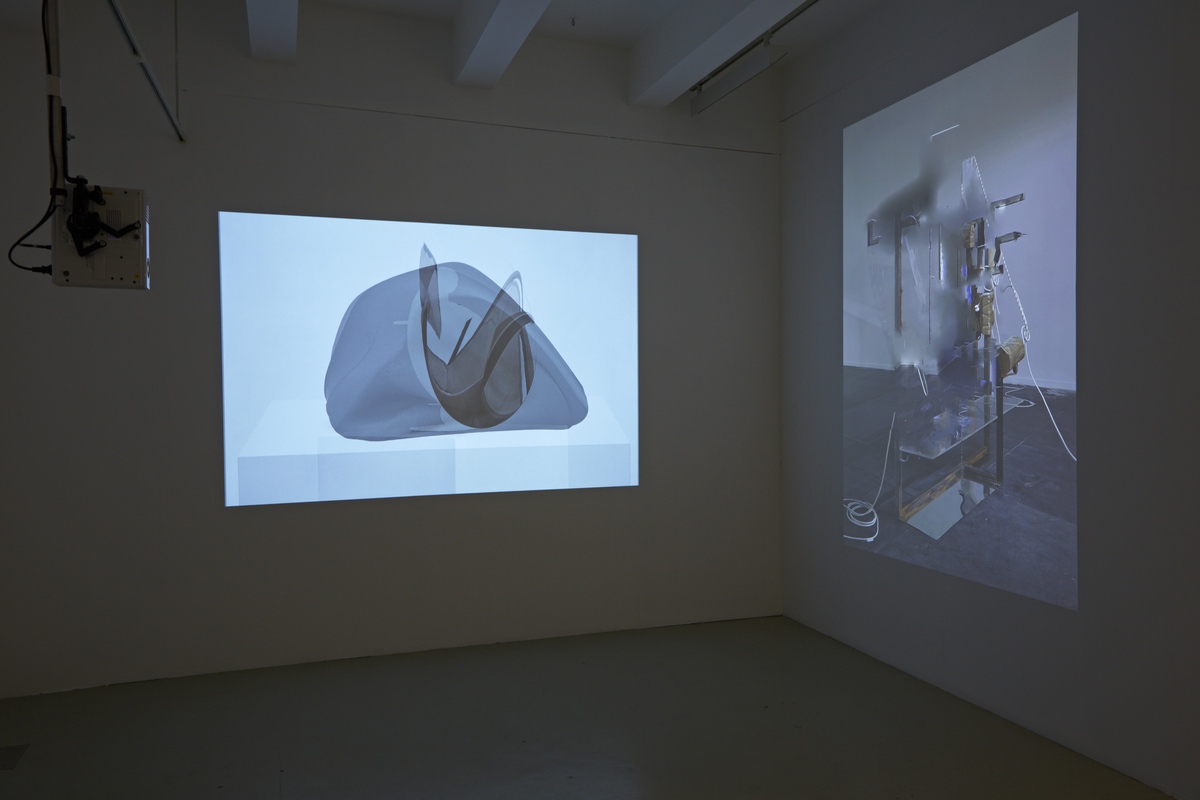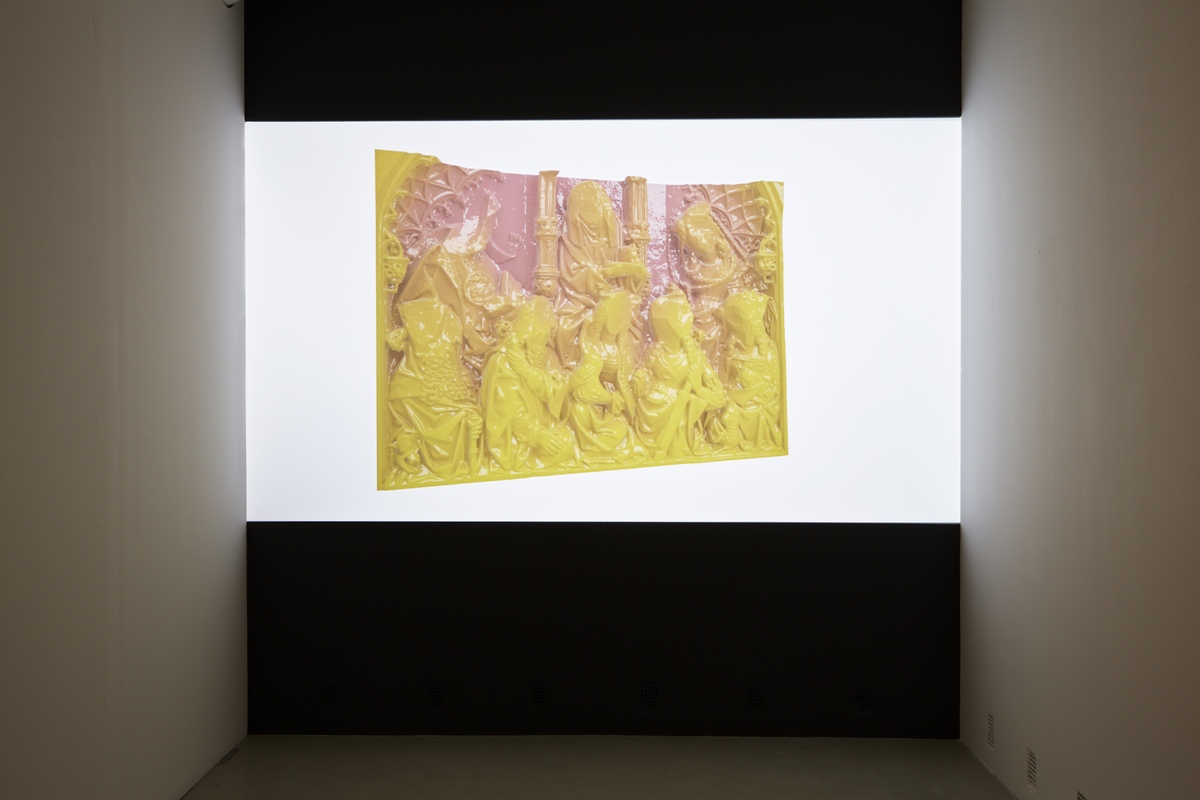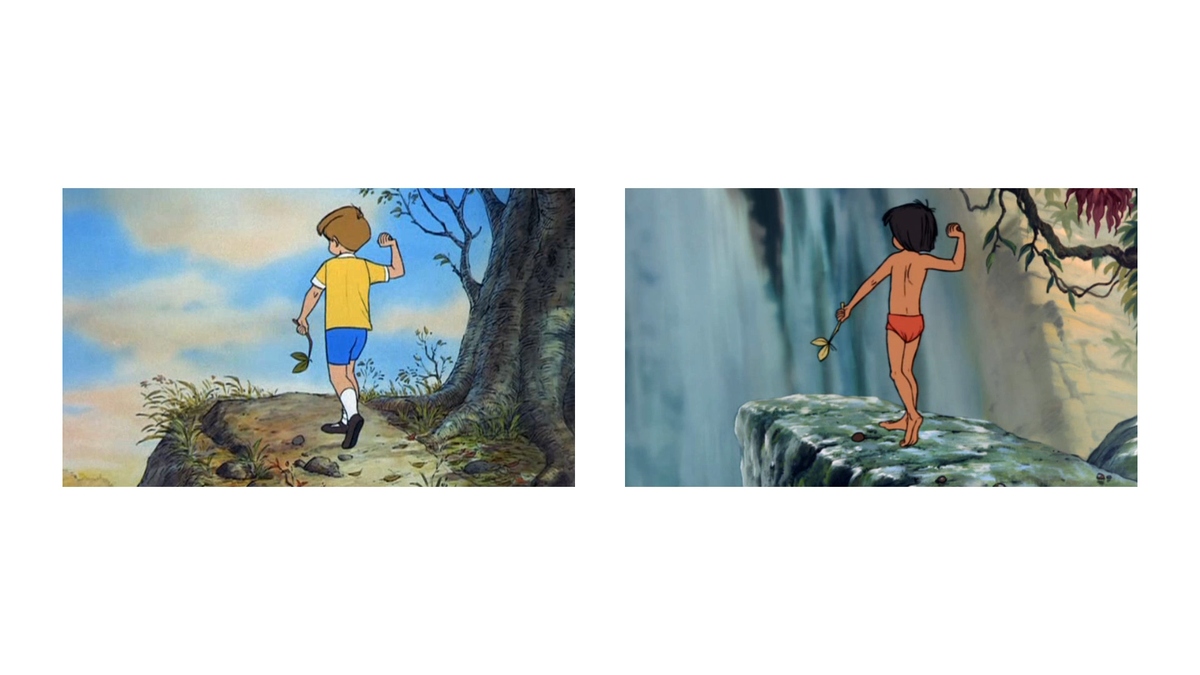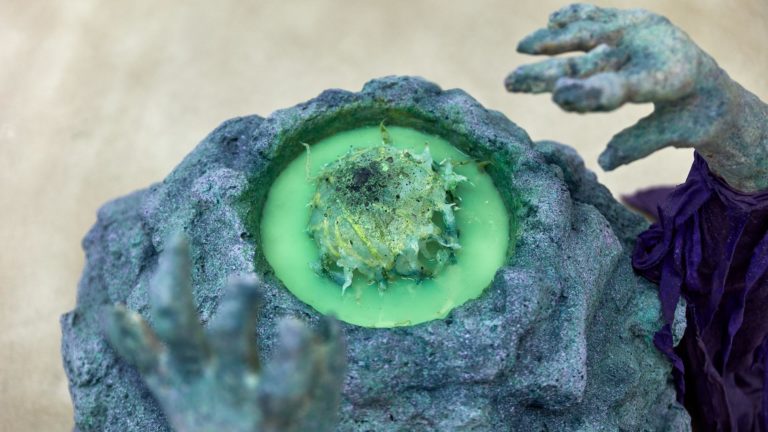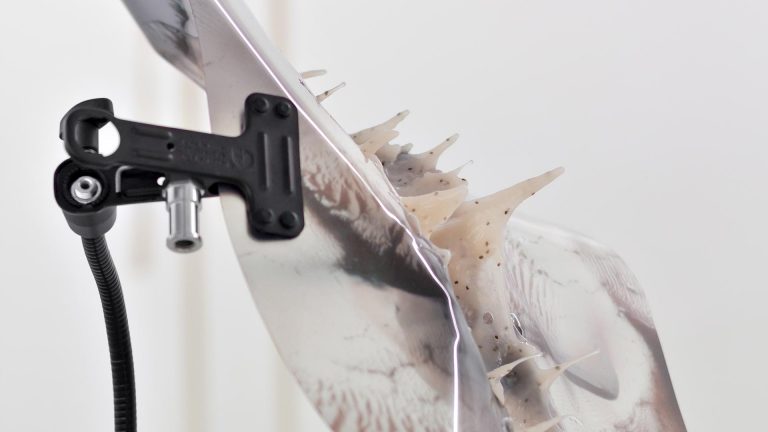Artists: Nicolás Lamas, Oliver Laric, Ádám Ulbert
Exhibition title: Figura complexus
Curated by: Áron Fenyvesi
Venue: Trafó Galéria, Budapest, Hungary
Date: April 9 – May 15, 2016
Photography: images copyright and courtesy the artists and Trafó Galéria, Budapest
The exhibition of Trafó Galéria is showing works of three artists who are tending to deal with the narra-tive aspects of sculpture. For the artists – who are also keen on using digital language – it is crucial to examine the relation of objects and plastic forms to narration. The abstract and amorphous pieces are letting themselves be interpreted in the frameworks of an analytical question, which is often overlooked in contemporary visual arts: what is the function of images, what is their role, status, hierarchy in the age of digital culture? How are we manipulating stories with images, how are images with a changing function manipulating possible stories?
Entering the gallery space the viewers pass through the works of Ádám Ulbert (1984) first. Ulbert’s cycle consists of drawings, aquarelles, objects and a short animation, which were all created in the frame of his program undertaken as the resident of Rijksakademie, Amsterdam. The core of this very complex series is the technical and formal homogenity of the pieces which is not attached to any used media. The artist is searching for fundamental forms, which can be undeniably identified as forms, but beside their „formnessness” we can’t attribute to them automatically, not even unconsciously an identity or narrative. The goal of Ádám Ulbert is to execute an archeological and psychoanalytical research into the deep primary state of forms, which tries to create entities, which are visibly forms; but beside this, we can’t state, formulate any objective quality about them, because they haven’t entered yet the process of differentialisation.
The present cycle of Ulbert, as in most cases of his previous ones, takes drawings and aquarelles as a starting point. The primary work exhibited in Trafó is his animation, which is created out of the images also visible on the wall. The animation in a way is the most two-dimensional work of Ulbert on display, basically its possible third dimension can be considered as temporality. The paperworks which were taken as starting points, were turned into rubber reliefs, which received also a plastic frame manufactured by the artist. The three-dimensional epoxy objects of Ulbert also bear the color-scale and form-set of the rubber-aquarelles and the animation. But the sculpture-like plastic objects are displayed as fragments on their metal structures, which can remind us of classical museological tools used for the display of archaic sculpture. The artist’s work also contains a “comics” layer, because with the fragmented haikulike title can be understood as an abstract text bubble of the artworks. The words of the title also stand on their own as fragments, which can’t be linked directly to each other just as the images, which are not linked in a narrative way, only in an instinctive formal modus
Nicolás Lamas (1980, based in Ghent) also playfully uses museological and archeological forms. The Peruvian artist’s object-based installations can be interpreted as Wunderkammers, which unite seemingly rare and exceptional materials, with everyday objects, on a skeleton of a functionalist mass industrial structure. In the installation of Lamas, objects with very different status get on the same page, like reproductions of archaic objects, house-flavor perfume, snake-skin, living tissue, rare minerals, and piece of meat decorated with fake jewelry. The separate elements of these object groups on their own can resonate with contexts ranging from voodoo to alchemy. But what we can take for granted is that the co-ordination of Lamas and his very extendedly sensual approach, also compressing very intensive smell, represent a very new and unique biological approach on installation art. The installations of Lamas are theses and antitheses at the same time, a deconstructed microcosm, in which the banal and the wild go hand in hand, cultural signs align with objects of nature. The works can be interpreted as well as exotic afterlife of poetic forms. The other work complex of Nicolás Lamas visible in the space is entitled Layers of meaning consists, in its present form, of a two channel slideshow. In the ongoing project of the artist (2012-) the audience can experience overmanipulated images. They all contain very obvious signs and traces of digital interference, error and blur. One key to the work is the origin of the photos, which all are selected from such online media as Contemporary Art Daily, Mousse Magazine or ArtViewer, which all function as easily accessible online orientation points of the contemporary art world. The artist added digitally new layers to them or erased some of their basic visual elements. Lamas, with this gesture, actually created new works by appropriating the photo reproduction of other artists and made the original artworks lose their original form, quality and meaning. The affinity of this project can be interpreted parallel with the origo of the works of Ádám Ulbert. Nicolás Lamas searches with the tool of image manipulation for the roots of contemporary visuality, and completely covers the differentiality with digital reduction in different documentation of exhibition views. He founds the formless form in the overaesthetisation of contemporary art.
Oliver Laric’s (1981, born in Innsbruck, based in Berlin) video project Versions was one of his most groundbreaking works, which launched the global success of his artistic career. The 2010 Versions, which gained multiple different video variations contains the most references to sculpture and its relation to narrativity, that’s the reason why this version is screened in the Trafó exhibition. The narration of the video, which resembles the style of popular scientific documentaries, highlights the impossibility of finding the image-archetypes, as the culture of versions is part of mankind’s modernity. There are no images or any sort of truth connected to them, which would function as peak points of metaphysical hierarchy, since everything rather exists and can be perceived through interpretation. During European art history, many functional artefacts became art, as not their genuine source but their use was appreciated and valued. Images and objects constantly change their forms and get devaluated, as everything is relative and just a version of a version. There is no objective, or ontologically true image that would contain decodable traces of its exact origin. At this point, we may recall the program of the two other exhibitors as well: the pieces of Ádám Ulbert are basically variations of each other, and Nicolás Lamas creates new versions of the ever-changing icons of contemporary art. The particularity of Laric’s video is also based on the fact that he doesn’t only research the versions in the frame of art, but also in the context of visual culture as he refers also to iconic images of animated cartoons and press photography.
To sum it up, the Figura complexus exhibition invites its viewers for an adventure where everyone can investigate the homogeneity and co-ordination with the help of the artworks, which search for the origin of forms and images, archetypes’ with their holistic and compact approaches.
Adam Ulbert, toad edifice / phantom senses 6, 2016
Adam Ulbert, toad edifice / phantom senses 6, 2016
Adam Ulbert, toad edifice / phantom senses 1, 2016
Adam Ulbert, toad edifice / phantom senses 6, 2016 (detail)
Adam Ulbert, toad edifice / phantom senses 5, 2016
Adam Ulbert, toad edifice / phantom senses 3, 2016
Nicolás Lamas, The value of formlessness, 2014
Nicolás Lamas, The value of formlessness, 2014 (detail)
Nicolás Lamas, The value of formlessness, 2014 (detail)
Nicolás Lamas, System of objects, 2016
Nicolás Lamas, System of objects, 2016 (detail)
Nicolás Lamas, System of objects, 2016 (detail)
Nicolás Lamas, System of objects, 2016 (detail)
Nicolás Lamas, Layers of Meaning, 2012
Nicolás Lamas, Layers of Meaning, 2012
Nicolás Lamas, Layers of Meaning, 2012
Nicolás Lamas, Layers of Meaning, 2012
Nicolás Lamas, Layers of Meaning, 2012
Oliver Laric, Versions, 2010
Oliver Laric, Versions, 2010
Oliver Laric, Versions, 2010
Oliver Laric, Versions, 2010 (still from video)
Oliver Laric, Versions, 2010 (still from video)















